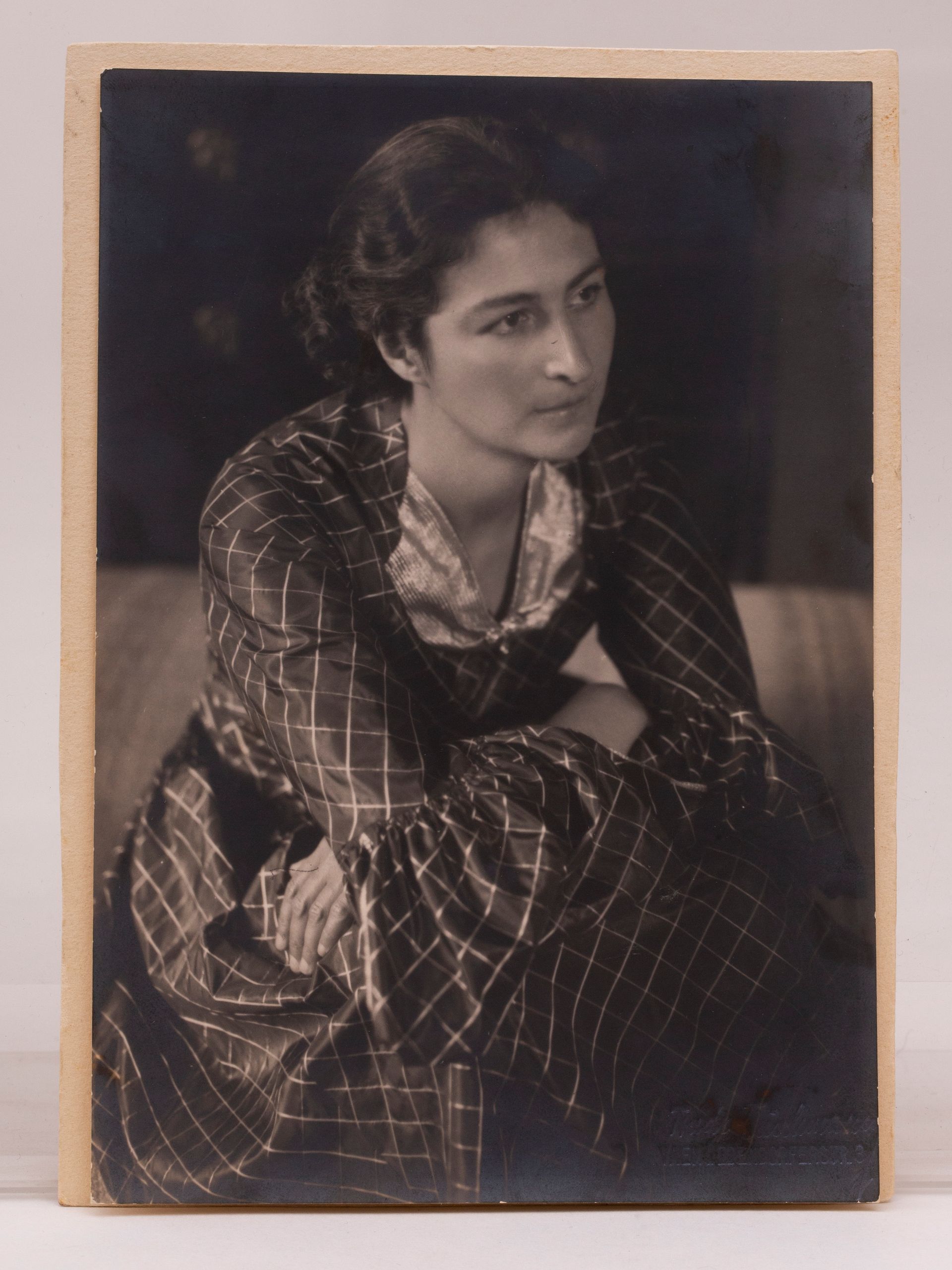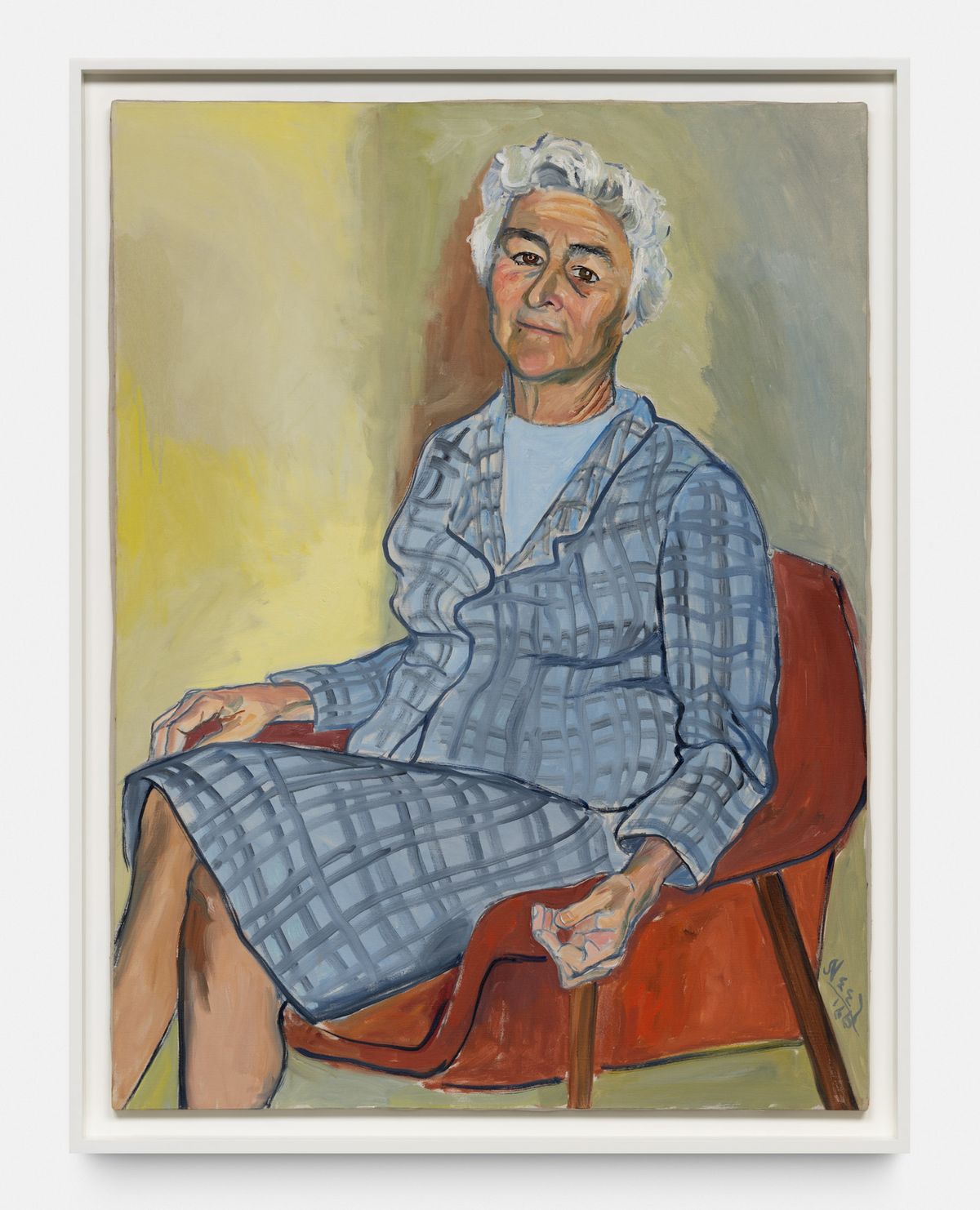American artist Alice Neel usually painted her expressive portraits of friends and neighbours in her uptown Manhattan apartment, but she made an exception for Muriel Gardiner Buttinger. For this sitter, shown wearing a checkered skirt suit against a glowing yellow wall in 1966, Neel trekked crosstown to the psychoanalyst’s Upper East Side home. Afterwards she took the canvas home, where it remained in her possession (and later in her estate), unexhibited until this week.
Portrait of Muriel Gardiner Buttinger (1966) is now having its public debut as part of Seeing who we are, a solo Neel exhibition at Belgian gallery Xavier Hufkens, which has represented her estate since 2015. The show includes 13 works, ten of which have never been publicly exhibited. “We wanted to offer new entry points into Neel’s still many untold stories,” Hufkens said in a statement.
The show coincides with Neel’s well received traveling survey, People Come First, which began in 2021 at the Metropolitan Museum of Art and is on view at the Guggenheim Bilbao before continuing to San Francisco’s de Young Museum. A separate Neel retrospective, An Engaged Eye, will open at the Centre Pompidou this October.
The creation of several of the paintings in these shows was made more feasible by Gardiner, a major benefactor of the artist. Two years before sitting for her portrait, she started gifting Neel an annual stipend of $6,000 (roughly equal to $54,000 today) that continued for 20 years, until Neel’s death. “My mother helped a lot of people,” Gardiner’s daughter Constance Harvey is quoted saying in Alice Neel: The Art of Not Sitting Pretty (2010), about how her socially-minded mother often used the funds inherited from her affluent Chicagoan family. “They didn’t have to be artists.”

Muriel Gardiner in 1934 Photo © Connie Harvey, courtesy Freud Museum London
Meanwhile in London, a current exhibition at the Freud Museum spotlights Gardiner as well. “She had huge independent means, which she used very much to benefit others, often without people knowing,” says Carol Seigel, Freud Museum director. Code Name Mary, which closes on 6 February, shows unpublished documents, photographs and paintings borrowed from Gardiner’s family to tell the story of her risky underground efforts during the 1930s to smuggle Jews and anti-fascists out of Nazi Austria, saving hundreds of lives. The show is also a way to thank Gardiner’s foundation for its financial support of the Freud Museum from its founding in 1986 until last year.
The exhibition includes paintings Gardiner bought from Sergei Pankejeff, better known as Freud’s famous patient the ‘Wolf Man’, to support him when he was impoverished. Buttinger’s modest art collection also included a Cityscape(1934) that Neel gifted to her (purchased by the National Gallery of Ireland in 2018) and two other Neel paintings she acquired at some point, (though not the portraits of her and her husband, Joseph Buttinger). Generally, though, Gardiner’s art collection was an extension of her modest lifestyle.
“She bought all her clothes off the rack, and the pictures in her home were reproductions,” Hal Harvey, her grandson, told The Guardian. “To really know her, you had to understand how understated she was.”
- Alice Neel: Seeing who we are, 27 January-5 March, Xavier Hufkens, Brussels
- Code Name Mary: The extraordinary life of Muriel Gardiner, until 6 February, Freud Museum London


